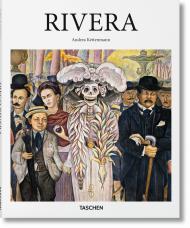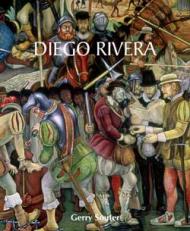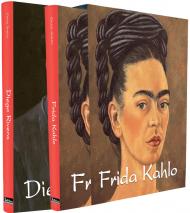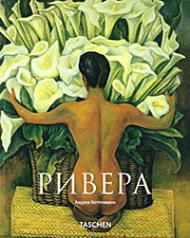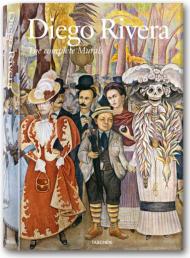Diego in Detail. The most comprehensive study of Rivera’s work ever realized
Latin American folk hero, husband of Frida Kahlo, devout Communist, and Mexico’s most important artist: the oeuvre of Diego Rivera is finally done justice in this monograph constituting the most comprehensive study of his work ever made. More than a half-century after his death, Rivera’s story, complete mural works, and recently discovered pieces are brought to life alongside private photos and drawings.
A veritable folk hero in Latin America and Mexico’s most important artist — along with his wife, painter Frida Kahlo — Diego Rivera (1886–1957) led a passionate life devoted to art and communism. After spending the 1910s in Europe, where he surrounded himself with other artists and embraced the Cubist movement, he returned to Mexico and began to paint the large-scale murals for which he is most famous. In his murals, he addressed social and political issues relating to the working class, earning him prophetic status among the peasants of Mexico. He was invited to create works abroad, most notably in the United States, where he stirred up controversy by depicting Lenin in his mural for the Rockefeller Center in New York City (the mural was destroyed before it was finished). Rivera’s most remarkable work is his 1932 Detroit Industry, a group of 27 frescos at the Detroit Institute of Art in Michigan.
This volume features numerous large-scale details of the murals, allowing their various components and subtleties to be closely examined. In addition to the murals is a vast selection of paintings, vintage photos, documents, and drawings from public and private collections around the world, many of which the whereabouts were previously unknown to scholars and whose inclusion here is thanks to the most intense research performed on Rivera’s work since his death. Texts include an illustrated biography and essays by prominent art historians offering interpretations of each mural. One could not ask for a more comprehensive study of Rivera’s oeuvre; finally, his work is the subject of the sweeping retrospective it deserves.
About the Authors:
Luis-Martín Lozano is art historian and curator of modern and contemporary art. He is the recipient of a Fulbright scholarship to research Rivera’s and Kahlo’s oeuvre in California. Lozano has taught and lectured extensively on the subject of Mexican art and has written more than 50 essays about Mexican modernism as well as monographic essays about Diego Rivera, María Izquierdo, Frida Kahlo, Remedios Varo and many others. Since 2001 he has been director of the Museo de Arte Moderno de México.
Diego Rivera's grandson Juan Rafael Coronel Rivera has worked as editor of the magazines Punto Cero en Literatura, El Faro revista de literatura y arte and M'hija, together with Carlos Jaurena. He founded Kahlo-Coronel Fotogalería, Mexico’s first private photo-gallery, in 1987. His collection of Mexican popular pottery is the world’s most extensive, including more than 15,000 pieces from the 16th century to the present day. He has curated more than 100 exhibitions for art galleries, museums, and biennials and has written 71 publications.
